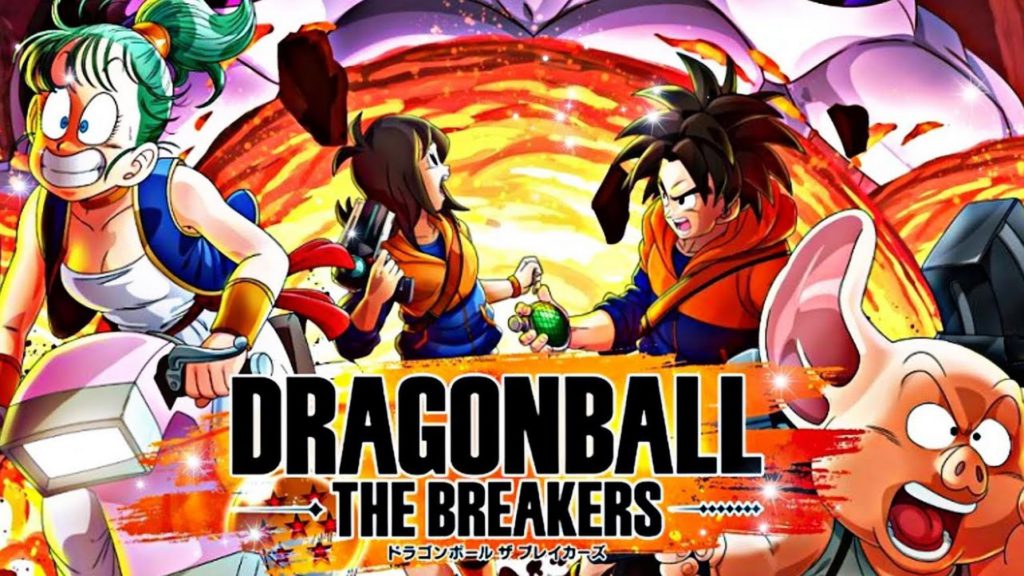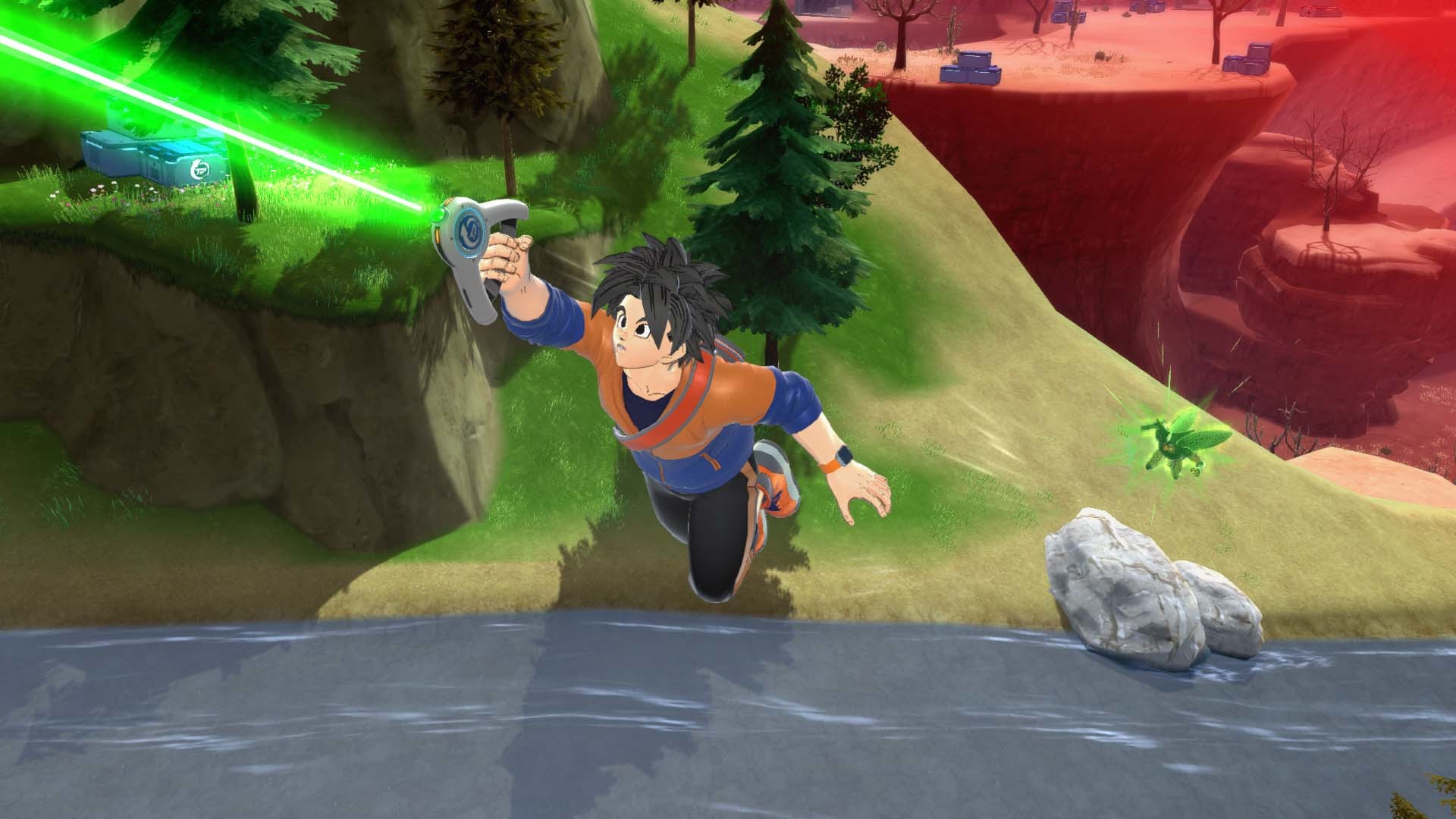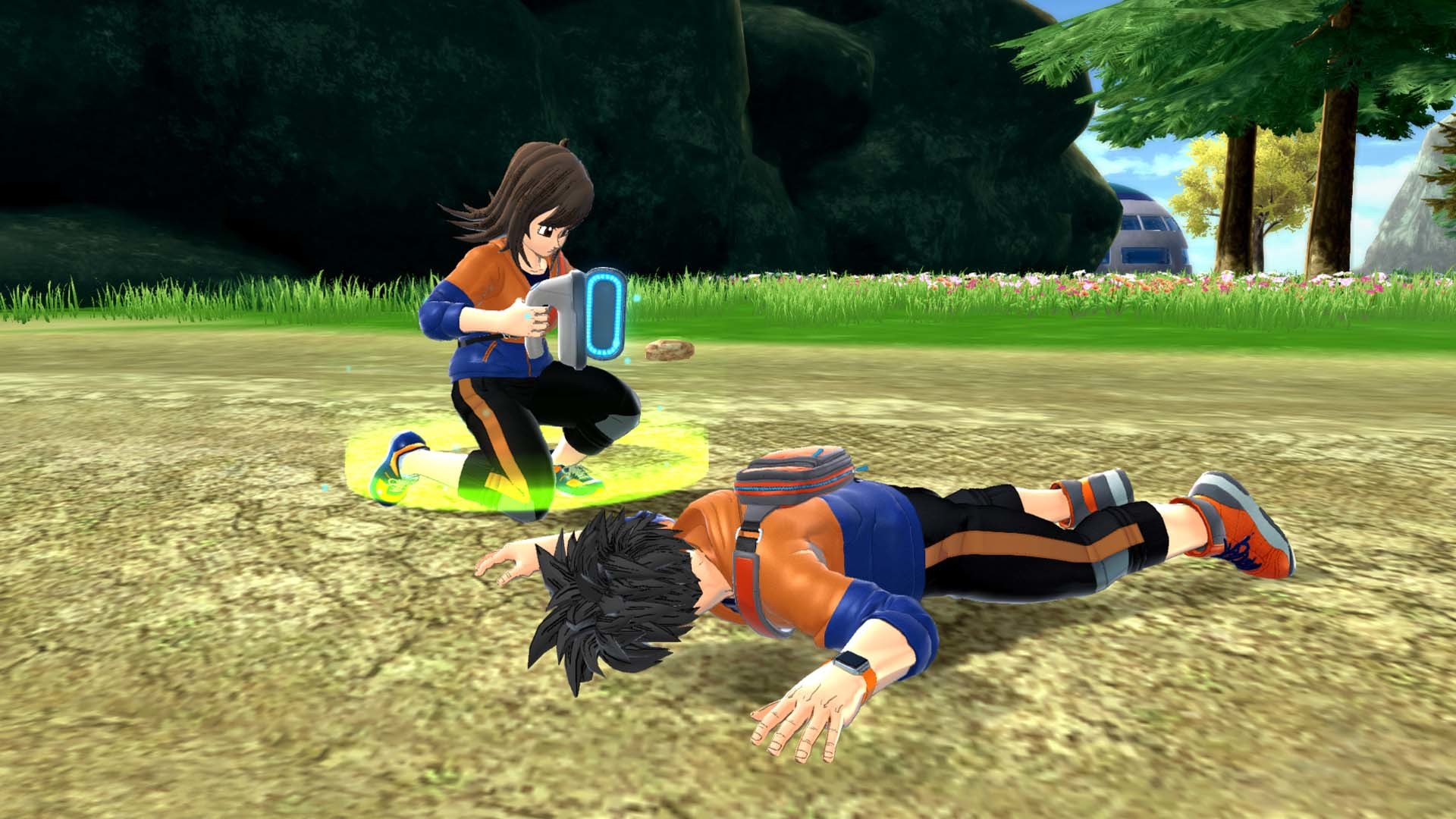
There are many generation-defining moments in pop culture, and a universal moment in history was seeing Goku turn Super Saiyan for the first time. The lead-up to this very moment was following the ultimate bad guy at the time, Frieza, as he terrorised the people of Namek. The fear that he struck into their hearts as he picked off those that got in the way, and the threat of his evolving form were a big part of why he was so menacing. The idea of this monster going unchecked with no Super Saiyan to step in is the very concept of Bandai Namco’s new game, Dragon Ball: The Breakers, where 7 survivors must work together to escape, with a few twists along the way.
Dragon Ball: The Breakers has a lively and vibrant setting with a playful art style that is inspired by the anime. It was refreshing to play a survival game in broad daylight, and despite my initial concerns, it didn’t take away from the urgency of being hunted and wasn’t as condemning as trying to hide either. This was especially true when playing as the survivors. They would scurry along the ground while sneaking and hiding behind walls while shaking uncontrollably. It was quite funny to watch. Levelling up as either Freiza or Cell, you must find civilians around the map to absorb their powers or finish off fallen survivors. The animation for the villain, though, is much more family-friendly than hanging people off a bloody hook, as Dead by Daylight would have you doing.
The general concept is that you have been caught in a time portal and are trapped with a Raider, and your main objective is to reactivate the super time machine. Each map is divided up into five locations surrounding a central zone, and within each zone is a hidden power key that can be used to power the start-up system. Players must move quickly though, as the Raider can destroy an entire zone each time they level up.

Teamwork can make short work of things, as one player may find the power key on one side of the zone and the other survivors can plant it in the designated area. It was a very clear system that showed the active zones on the top left, highlighted the ones where keys had been found, and crossed out the destroyed zones too, which eliminated the guessing portion and keep things flowing.
Survivors had access to a handful of items during a game and a list of skills they could bring in on their own. Being able to use your skills to drop a smoke cloud and then drop a bounce pad at your feet to flee a hairy situation was something small to keep you alive for the moment, but waiting for them to refresh balanced the experience. Other items, such as the Senzu Bean, could let you self-revive or quickly pick up a fallen survivor, and the rocket launcher could be used to disrupt the Raider from absorbing your teammates. The absolute best part I found, however, was the addition of the Transpheres, harnessing the essence of a Z fighter and letting you temporarily transform into a version of these super warriors. It gave you a chance to fight back, or even fly away, as the Raider will still be able to wipe the floor with you if you are not at the same level of power as them.
The turning point of each game can be dramatically flipped on its head with the additional mechanic of finding the seven Dragon Balls. If the survivors manage to collect all seven Dragon Balls and make a wish, they can turn one survivor into a true rival of the Raider and have a one-on-one fight straight out of the anime. They may also wish for every survivor to be raised to level three power, and together, can take on the Raider in an all-out brawl. The Raider can collect the Dragon Balls to boost their own power as well, but unlike the survivors who must be knocked out for them to drop their Dragon Balls, the Raider merely needs to be hit for them to drop their stash, making it a valid strategy to attack the Raider in an attempt to summon Shenron.

Each game I played, while following familiar beats, lead to a variety of games with dramatically different outcomes. The Raider, if they level up quick enough, can wipe an entire lobby within five minutes if they managed to divide the survivors up. Another game saw us continually attack the Raider and revive each other, trying to keep them from leveling up and activating the Super Time Machine for a full survivor extraction. An emergency escape pod can be called in for solo escapes as well which all lead to how much currency and points you earn at the end of the game. No matter what, you won’t leave empty-handed and there are plenty of ways to spend your points at the hub.
There was limited access to the stores, with three kinds of currency to spend on your skills, appearance, and summons. Clothes could be bought with silver to customise your own character, and skills can be bought to change on your designated survivor. There was also a place to purchase random summon with tickets or gold that can be set as your in-game Transphere. The Beta was very generous with its currency, though I am hoping the full game offers enough earnable currency to mitigate microtransactions.
Dragon Ball: The Breakers has shed a brand-new light on the survival/horror genre with a setting dear to many hearts. While we only got to explore two maps and play against Freiza or Cell, the concept was fresh, and playing with friends who can communicate their strategies was frantic and fun. With the full game two months away, I’ll be eagerly scribbling away some strategies for both sides of the coin and am extremely excited to try my hand at mastering Buu when he arrives.









